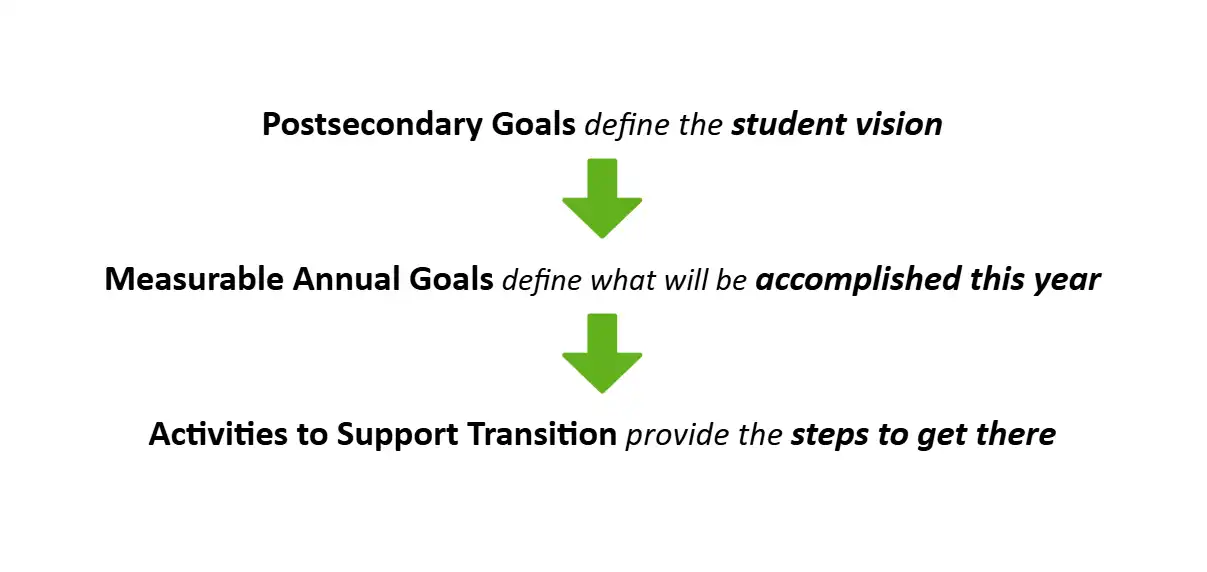Writing the Individual Transition Plan
Creating an Individualized Transition Plan (ITP) for your students is a vital step in helping them prepare for life after high school. The ITP is part of the student's Individualized Education Program (IEP) and focuses on setting realistic and meaningful goals to guide the student’s transition into adulthood. It is your role to ensure the plan is customized to the student’s strengths, needs, and aspirations, with a clear focus on supporting their postsecondary goals. The ITP addresses three core areas: Postsecondary Education/Training, Employment, and Independent Living. Planning these areas requires careful thought and collaboration to ensure the student receives the right supports and opportunities.
- Postsecondary Education/Training: This area outlines the student’s goals for further education or specialized training after high school. It includes identifying the types of programs or courses the student needs to attend based on their desired career or personal goals. Whether it’s enrolling in a college, vocational training program, or another educational pathway, this section provides the foundation for the student’s academic development and sets the stage for lifelong learning.
- Employment: The employment section focuses on helping the student acquire the skills and experiences needed for successful employment. This includes identifying potential career paths, developing job-specific skills, securing internships or work experience, and learning about the workplace. The goal is to ensure that the student has the skills and supports to navigate the working world, whether in a part-time, full-time, or supported employment position.
- Independent Living: Independent living planning involves preparing the student for day-to-day life after high school, including managing finances, self-care, communication, and household responsibilities. This section focuses on teaching essential life skills like budgeting, cooking, and transportation, as well as fostering independence in decision-making. It also considers the student's living situation post-graduation, whether in a dorm, apartment, or shared housing with friends or family.
By addressing these three key areas, the ITP creates a comprehensive roadmap for the student's transition to adulthood, ensuring that they are equipped with the skills, knowledge, and resources they need to lead a successful and fulfilling life.

